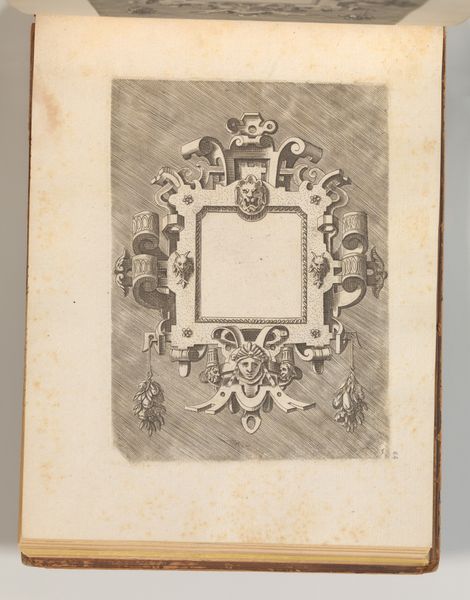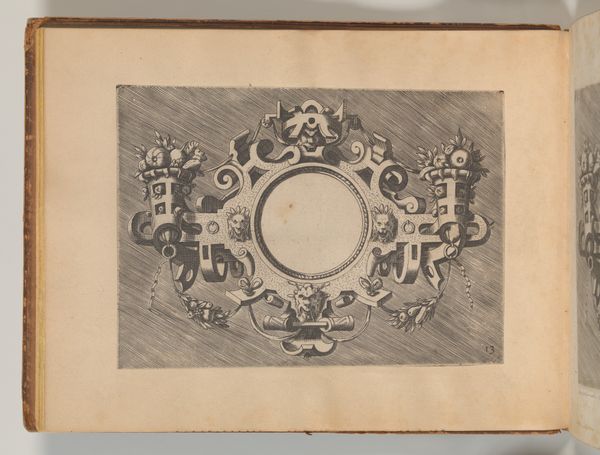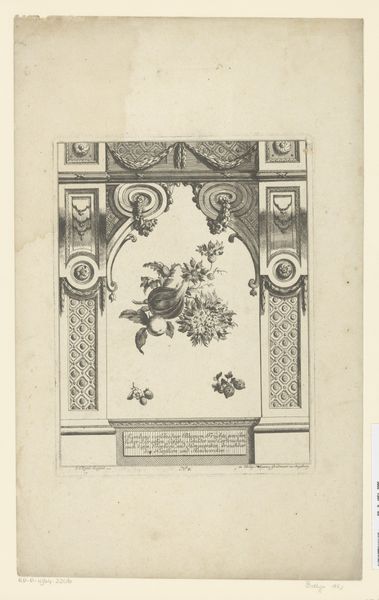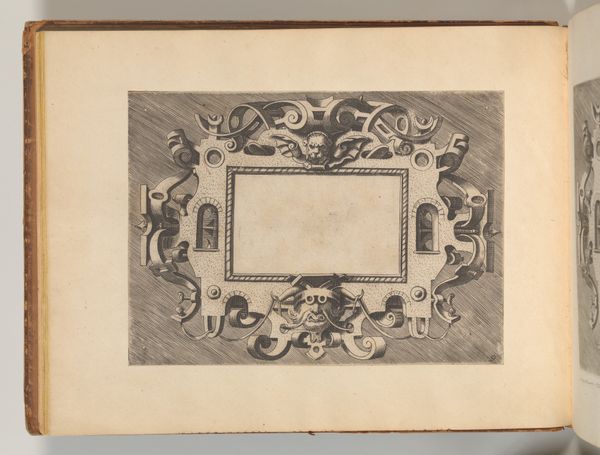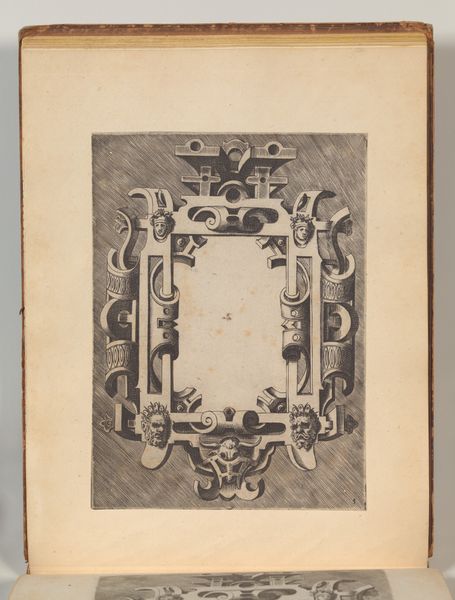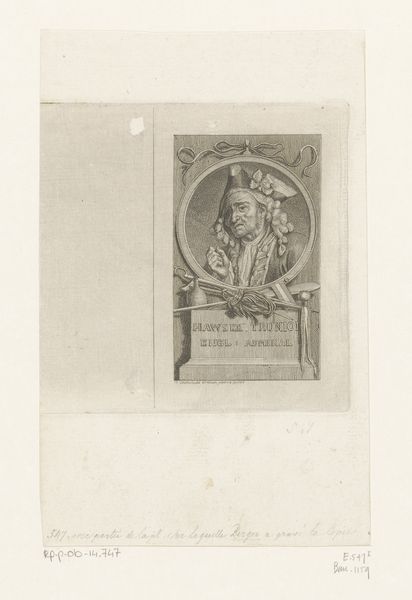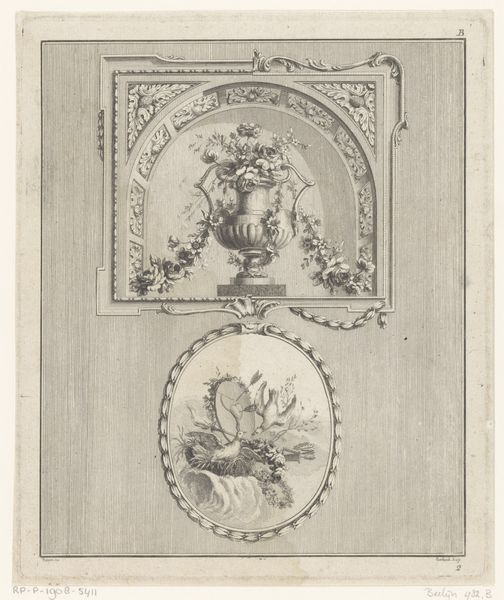
Targhe ed altri ornati di varie e capricciose invenzioni (Cartouches and other ornaments of various and capricious invention, page 32) 1555
0:00
0:00
drawing, print, engraving
#
drawing
# print
#
form
#
11_renaissance
#
geometric
#
line
#
northern-renaissance
#
decorative-art
#
engraving
Dimensions: Sheet: 7 7/8 × 10 5/16 in. (20 × 26.2 cm) Plate: 5 1/8 × 11 13/16 in. (13 × 30 cm) Overall: 8 1/4 × 10 5/8 in. (21 × 27 cm)
Copyright: Public Domain
Editor: Here we have "Targhe ed altri ornati di varie e capricciose invenzioni (Cartouches and other ornaments of various and capricious invention, page 32)," a print by Hans Vredeman de Vries from 1555. The geometric ornamentation really stands out; it has a theatrical yet disciplined quality to it. What strikes you about it? Curator: What interests me most is the production of this image, a Renaissance engraving intended to circulate widely. These prints were not 'high art' objects but were intensely practical; consider their role as disseminators of design ideas. Think about the artisans, the workshops…the *means* of production driving aesthetic trends. Editor: So, the print's significance lies beyond its purely aesthetic qualities, in how it shaped artistic practice? Curator: Precisely. How many other objects would the design eventually appear on, from furniture to buildings? It wasn't just about artistry; it was about industrializing taste, shaping the material culture through reproducible imagery. Consider also the availability of these materials; was there increased or easier access to printing that boosted production? Editor: That’s fascinating. It puts a different spin on it. I'd always considered engravings as isolated art pieces, rather than mass-produced tools. Curator: See how these ornaments become a blueprint. We might even examine the labor involved, from the initial drawing to the engraving process and even the distribution. Were guild structures involved, perhaps restricting access or regulating the quality of production? Editor: Viewing it in terms of production really does illuminate a different facet of the work. I never considered how something like this could function as a design manual! Curator: Exactly! This reframes our understanding of artistic creation. It prompts questions about consumption, the commodification of style, and how it transformed society's relationship to art. Editor: Thank you, that makes me appreciate not only the aesthetics but the social context so much more.
Comments
No comments
Be the first to comment and join the conversation on the ultimate creative platform.



